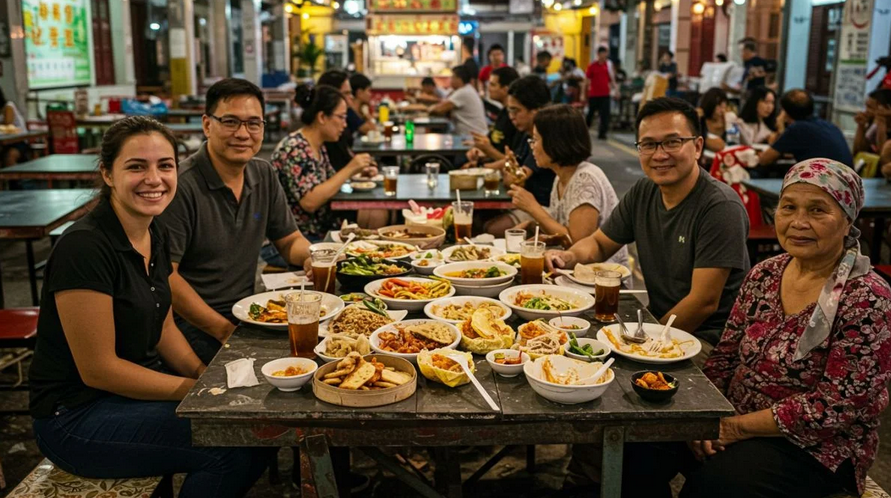Chinatown hawker leftovers consumption is an emerging topic that reflects both environmental awareness and cultural adaptation. Across many bustling food hubs, especially in areas like Chinatown, hawker stalls often produce more food than they sell. This creates a challenge: what happens to all that unsold food? Instead of letting it go to waste, a growing trend focuses on reusing, redistributing, and responsibly consuming these leftovers.
What Does Chinatown Hawker Leftovers Consumption Mean?
Chinatown hawker leftovers consumption refers to the practice of managing unsold food from hawker stalls in ways that are safe, sustainable, and beneficial to communities. It is not simply about eating leftover meals. Rather, it involves thoughtful systems that ensure food safety, reduce waste, and support people who need access to affordable meals.
This idea is becoming more visible as cities confront rising food prices and environmental concerns. By addressing these challenges, Chinatown hawker leftovers consumption reflects a new balance between tradition and modern responsibility.
Why Is This Practice Gaining Attention?
1. Environmental Impact
Food waste contributes significantly to global environmental issues. Leftover food in landfills releases methane, a harmful greenhouse gas. Chinatown hawker leftovers consumption helps reduce waste by ensuring unsold meals are eaten instead of discarded.
2. Cultural Relevance
Hawker stalls are iconic in many Chinatowns, offering affordable, diverse dishes. These stalls carry cultural meaning, and reusing their leftovers adds value to that heritage. Chinatown hawker leftovers consumption aligns cultural pride with practical action.
3. Economic Considerations
With inflation and rising living costs, people are looking for affordable ways to eat well. Organized efforts around Chinatown hawker leftovers consumption can provide low-cost meals without compromising quality.
How Does Chinatown Hawker Leftovers Consumption Work?
There are several methods emerging to make this practice efficient and safe:
- Discount Sales Before Closing
Many stalls reduce prices near the end of the day, allowing customers to buy fresh but unsold food at a fraction of the original cost. This is one of the simplest forms of Chinatown hawker leftovers consumption. - Partnerships With Charities
Some hawker stalls collaborate with local charities to donate surplus meals. This system ensures food reaches those in need while keeping the process organized and hygienic. - Mobile Apps and Technology
New digital platforms help connect consumers with stalls offering discounted leftovers. Chinatown hawker leftovers consumption becomes more accessible when technology bridges the gap between sellers and buyers. - Repurposing Ingredients
Unsold ingredients are sometimes repurposed into new dishes for the following day, reducing waste without compromising safety.
Challenges in Implementing This Practice
Despite its benefits, Chinatown hawker leftovers consumption faces several challenges:
- Food Safety Regulations
Governments often have strict rules about selling or donating unsold food. Hawkers must ensure that all food meets safety standards. - Public Perception
Some people may associate leftovers with lower quality. Raising awareness about the safety and benefits of Chinatown hawker leftovers consumption is essential. - Logistical Barriers
Small stalls may lack the infrastructure to store, transport, or redistribute unsold meals effectively.
Social Benefits of Chinatown Hawker Leftovers Consumption
This practice doesn’t just prevent waste; it strengthens communities. Affordable meals can support low-income families, students, and workers. In addition, the collaborative approach between hawkers, charities, and consumers fosters a sense of shared responsibility. Chinatown hawker leftovers consumption creates a bridge between tradition and modern sustainability efforts.
Future of Chinatown Hawker Leftovers Consumption
Looking ahead, this trend could become more structured and widespread. Governments might offer incentives for stalls that participate. Businesses could adopt specialized packaging to keep leftovers fresh. Educational campaigns can further normalize the idea, making Chinatown hawker leftovers consumption a celebrated part of urban living rather than a quiet practice.
Conclusion
Chinatown hawker leftovers consumption reflects a meaningful shift in how communities view food, waste, and responsibility. It merges cultural tradition with modern solutions, offering environmental, economic, and social benefits. As awareness grows, this approach could become a model for other food hubs worldwide, proving that small changes—like rethinking what happens to unsold meals—can lead to significant impacts.



